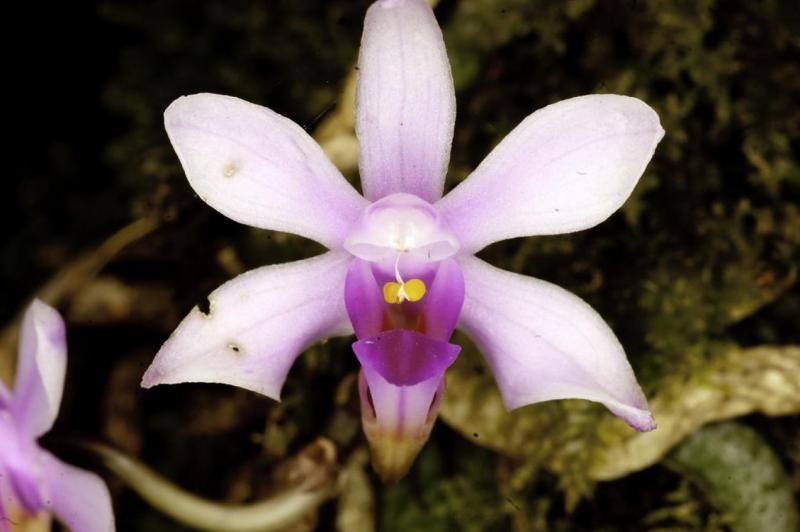Phalaenopsis taenialis
Also known as: The Bandage or Doritis braceana Phalaenopsis braceana Biermannia navicularis Kingidium taeniale Aerides carnosa Kingidium braceanum in the subfamily: Epidendroideae
Native to: Bhutan Manipur - India Meghalaya - India Myanmar Sikkim - India Thailand
General Information
The Bandage is a miniature monopodial cool to warm growing epiphytic orchid belonging to the sub family Epidendroideae native to Bhutan, India, Myanmar, and Thailand.
Plant Description
Monopodial. Each new growth has numerous elliptic lance shaped, oblong shaped leaves that grow to 2-10cm long
Substrate(s)
- Coarse
- Medium
- Bark
- Charcoal
- Spaghnum Moss
- Perlite
Care Notes
This orchid goes into a dormancy phase during winter, during this phase it is best not to provide water unless the plant is starting to look thirsty. The lack of water increases the chance of flowering in spring, and also reduces the likelihood of any rot forming. Do not resume watering until new growth has appeared and is growing strongly.
Often a period of intense growth occurs after dormancy. During this time the amount of light, water and fertiliser the plant receives will directly impact the amount of growth that occurs during this time, and in the case of seedlings, will reduce the time required to reach maturity.
It's recommended to heavily reduce the water amount at the middle to end of autumn to trigger dormancy. Leaves on older bulbs will begin to drop during this time while the newer bulbs continue to mature until terminal leaves appear at the tip of the pseudobulbs.
Repotting can be done any time of the year though it's best to do it in early spring when new growth is appearing as this also means new roots will appear to help the plant anchor into the new media and offset any damage to established roots during the repotting process.
Climate
Grows at high elevations. Rainfall ranges from 3mm to 373mm per day, heaviest in July and lightest in December. Humidity ranges from 53% to 85%, highest in November and lowest in April. Temperature ranges from 1C to 28C, highest in May (19C to 28C) and lowest in January (1C to 17C).
Fertiliser
dormant-medium-demand-orchid Apply fertiliser regularly at half strength year round. Use a high Nitrogen fertiliser during Spring and Summer. Use a high Phosphorous fertiliser during Summer.
Potting
These plants are quite forgiving and will do well repotted ever 2-3 years. The mix should be coarse, well draining, and allow space for air to move and for roots to grow.
Alternatively, these plants will also do well mounted to tree fern or cork slabs, or mounted to trees.
Best time for repotting or mounting the orchids is the end of winter when new growths start to appear. Avoid repotting during hot weather,
Use water retentive media such as moss to prevent roots from drying out quickly This plant does very well in baskets or suspended pots This plant does well mounted. Repotting is best done annually.







